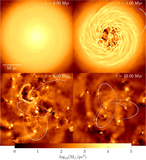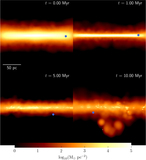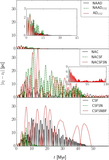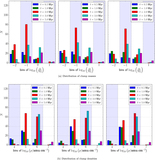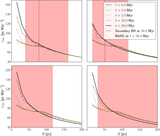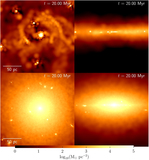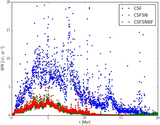Image Details
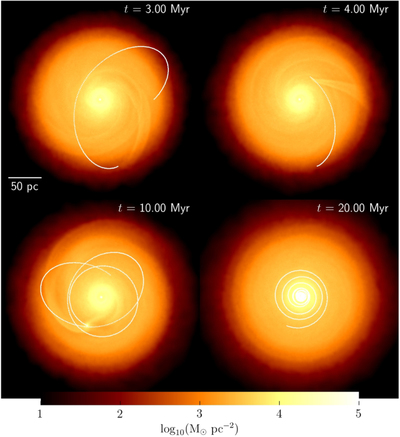
Caption: Figure 2.
Gas density face-on projection and secondary BH’s trajectory (white lines) for the adiabatic run NAAD (see Table 1) at different times. A scale bar on the top left panel shows the size in pc. The color code represents the disk density integrated along the z-axis (perpendicular to the disk plane), which rotates counter-clockwise in this perspective. Trajectories are shown for time intervals between snapshots. In the top left panel, we see a leading spiral wake caused by the BH near an apocenter as a perturbation to the disk density. In the top right panel, a trailing wake is captured near a pericenter. The net effect of the wakes over a few orbits is to circularize the orbit. The lower left panel shows a resonant interaction between the BH and the gas as the orbit becomes circular. After circularizing, the gas extracts its angular momentum and the separation shrinks in a relatively short timescale, as clearly captured on the bottom right panel. The interplay between perturber and background is analogous to results found in the literature for planet migration.
Copyright and Terms & Conditions
© 2017. The American Astronomical Society. All rights reserved.



